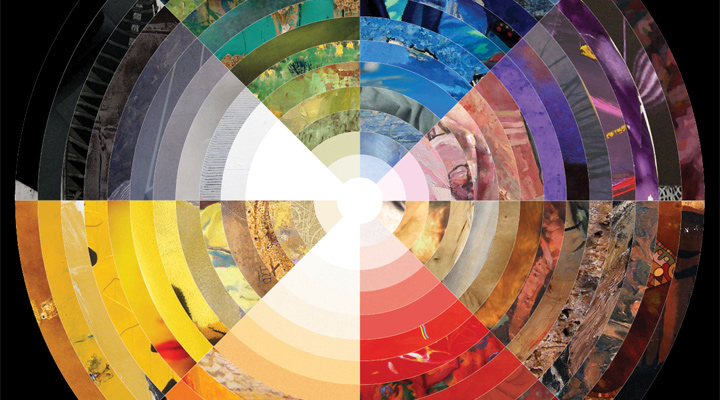
We have tried to present here a truly permanent exhibition, differing from all the previous ones primarily in its concept. It is determined by colour as one of the fundamental elements of plastic art. We tried to fit all the rest into this main determinant, often forced to reconcile, or even consciously juxtapose, the poetics of different authors, erasing the boundaries that had been delineated long time ago, and overcoming the gaps in time. With several borrowed works, the depot of the National Gallery of Bosnia and Herzegovina has offered again much more material than the exhibition area could possibly take.
The exhibition is made of two main parts: the first floor, where we have presented the works done in an achromatic scale, i.e. the works done in the shades of black, white and grey. The absence of colour – either partial or total – is not a rare phenomenon in the 20th century art and this exhibition makes it more than evident. The works presented here were created in the chronological sequence that encompasses both academic realism and plenarism, and contemporary artistic expressions that did not abandon figuration, to the more expressive forms and informel, and then to geometric abstractions and totally white surfaces, only to return – through the “isms” of post-modernism – to geometry, gesture and figuration.
[nggallery id=9]
The second part of the exhibition, presented in the “Swiss Gallery”, is organized in nine separate modules within which colour connects different visual expressions into clearly defined groups. Each of them is followed by brief information on the emergence and history of a certain colour in the art of painting, its symbolic meanings, pigments etc. Although not great in terms of the number of works, the modules succeed in demonstrating some of the basic features of individual works. Thus, it is easy to notice that blue offers a sense of contemplation, still emanating a certain melancholy; that, thematically, green is closely related to landscape, while purple is reserved for “intimate abstraction”; red emanates force and intensity, while brown, with all its tones, is mainly reserved for human figure.
Many people have dealt with the theory of colour, and they did it as early as at the very beginning of the European civilisation. Aristotle, Pliny the Elder, Newton, Goethe, to mention only the greatest, approached it from different aspects in their attempt to penetrate as deep as possible into its substance. The understanding of colour and light has been developed gradually and slowly, so that, today, we could speak about colour from the point of several different scientific disciplines (physics, history, sociology, and the science of communication). It seems that the science of colour said all it. In art, however, colour remains a medium of individual expression that may, although it is not necessarily the case, fit into some established clichés. Such works are recognisable at this exhibition as well.
Finally, in addition to some basic thoughts on the history, the connotations and the “destiny” of each of the presented colours, what one can still discover at this exhibition is, for example, the meaning of blue jeans, when the sky turned blue, who painted Santa Claus, and many more things.
If consumed more than once – several times preferably – this exhibition gives a guarantied pleasure!
